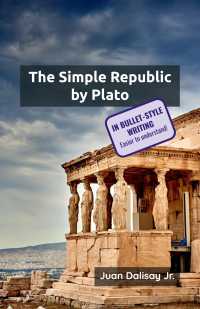The Four Laws of Exchangeable Value
7 minutes • 1371 words
Table of contents
Suppose Barry and Adam are walking at a commercial street. They see a cake at a bakery, and an iguana at the pet store next to it.

Barry might not see value in the cake, but Adam might, as he might want it for his wife’s birthday tomorrow.
The value of the cake to Adam comes from:
- the inherent nature of their culture* to impose gift-giving during birthdays, and
- the inherent nature of the cake as a kind of birthday gift, arising from the culture.
*This includes the culture of givine importance to birthdays. The nature of culture is explained by Social Superphysics, as being part of the common interest.
In contrast, the iguana does not have an inherent nature of being a gift. This is why Adam would not assign a value to an iguana. Adam would only assign a value to Iguana if his wife were an Iguana-lover (had the inherent nature of loving iguanas). In this case, he might ignore the cake and inquire about the iguana.
Thus, value is always relational depending on the inherent nature of many things:
- Adam
- Adam’s wife
- Adam’s wife having a birthday event
- Adam’s culture imposing the need to give gifts during birthday events
The value of an iguana or a cake to Adam would depend on:
- The social pressure* to give gifts during birthdays. We can call this the ‘cultural value’
- Adam’s love for his wife. We call this ‘sentimental value’
- His wife’s need for a gift, whether it be the cake or the iquana. We call this the useful value or ‘use-value’
*This social pressure is needed to keep the society whole.
Unlike Economics, Supereconomics, as a subset of Superphysics, takes into account cultural value and sentimental value. There are other values like environmental value, historical value, moral value, etc. which will be explained in future editions.
Use-Value
In Neoclassical Economics, the use-value is called ‘utility’ and is the foundation of its theories like marginal utility.
Marginal Utility
According to Economics, utility is the satifaction that you get from a good or service.
Initially, this satisfaction increases with every additional item bought. But in time, your satisfaction from the item increases in smaller amounts until it no longer increases.
If you get more, then it might cause dissatisfaction, which is negative satifaction. At such a point, you stop buying.
This concept requires the quantification of pleasure or utility, which is then ‘maximized’ as ‘profit maximization’ which is a major fallacy perpetrated by Economics and is the cause of poverty, inequality, and economic crises.
Superphysics disregards marginal utility because utility is subjective. Each person gets a different level of satisfaction at every good or service, and so it would be wrong to create a rigid, objective model for dynamic, subjective utility.
This error manifests as investors denying investments to sectors, industries, or goods and services that do not fit their own utility models (i.e. meet the direct return-on-investment, or ROI, that they want). This then causes economies to regularly stagnate, and even decline, due to the decline of those underinvested sectors or industries.
Instead of marginal utility, Superphysics uses minimum requirements, explained in Chapter 5, and the grain index, explained in Chapter 8. These concepts will let people spend and invest for the essential sectors or industries of the economy, whether it is profitable or not.
In this way, those sectors will remain capitalized and functioning. This will then prevent price shocks or externalities that grow into crises which harm the sustainability of the supereconomy*.
*An economy that follows our principles of Supereconomics
Exchangeable Value as Societal Worth
In our example, a cake gets value because of the nature of:
- Adam’s love for his wife
- his wife’s birthday
- the culture of giving cakes during birthdays
All these factors go into the value of the cake which Adam thinks of as the cake’s worth:
| Source | Value |
|---|---|
| Love for wife | Sentimental Value |
| Giving cakes or gifts on birthdays | Cultural Value |
| The usefulness of cakes to his wife | Use Value |
These 3 make up the exchangeable value of the cake in a society. Outside of society, only use-value and sentimental value would exist.
Use-value often is opposite in worth than exchangeable value. For example:
- diamonds have little use-value, but have a high exchangeable value because it is rare
- water has high use-value, but has low exchangeable value because it is plentiful
This difference arises from the difference between the nature of:
- the self-entity, here use-value dominates
- the society-entity, here exchangeable-value dominates
The Paradox of Value in Economics Leading to Sinister Profit Maximization
Economics uses the difference between use-value and nominal exchangeable value to create a non-problem called the “paradox” of value.
This paradox states that water is essential to life and has a high use-value, but is nominally cheap. Diamonds, on the other hand, are nominally expensive but have low use-value. So economists create the concept of marginal utility to “solve” the paradox.
Marginal utility says that the frequent consumption of an item, such as water, reduces the utility or use-value of that item. Therefore, to make it more valuable, its consumption should be limited. For example, if we drink 4 liters of water everyday, then we will appreciate water twice more if we only had 2 liters daily. This would then raise its use-value and subsequently its nominal exchangable value to be more like diamonds.
This then leads to its child concept called utility or profit maximization that would urge us to sell this scarce water to get more nominal revenue and riches for ourselves. We should find a sweet spot via maximization wherein we can cut the supply of water to give us higher revenues, but not too much that it would kill our market (by dying from thirst, for example).
All of this is morally absurd, yet this is what Economic Calculus teaches. This can be seen most commonly in the prices of oil, utilities, medical services, and real estate which everyone needs. To Adam Smith and Superphysics, use-value should not be compared to exchangeable value just as apples should not be compared to oranges. This is because use-value is personal while exchangeable value is social. Without the comparison, no paradox is created and no profit maximization, artificial scarcity, and social suffering is created for personal gain.
Within society, Adam can get the cake in 2 ways:
- By asking for it as a donation
- By offering something for it in exchange
Adam can ask for the cake as a donation by appealing to the baker’s benevolence. Donations and grants were more common in the ancient times:
The disciple Yen-Yu applied for some grain on behalf of his mother.
Confucius: Give her 3 pecks.
He applied for more.
Confucius: Give her 8, then.
Yen-Yu gave his mother 50 times that amount.
In modern times, donations have been overshadowed by money-purchases. In the interest of economic justice, Adam has to give something to the baker in return.
This sense of economic justice prevents Adam from stealing the cake, and in turn comes from the sense of common interest. Without the common interest in the minds of the people, economic crime has a chance of happening.
In a society, the following exchanges occur:
| Exchange | Description |
|---|---|
| Purchase | the acquisition of something by exchange. |
| Barter | a purchase done by exchanging goods or services. A barter transaction thus has 2 purchasers. |
| Buying | a purchase by offering money. The giver of the money is called the “buyer”. Since he receives goods and services, he is also called a purchaser. |
| Selling | the act of giving goods or services by getting money in return. The giver is called the “seller”, the getter is the “buyer”. |
| Commerce | a regular buying-selling activity* |
| Trading | a regular exchange activity |
| Barter Trading | a regular barter-exchange activity |
*We limit ‘commerce’ to money transactions in order to stay in line with the definitions of Adam Smith who saw the commercial system as being the same with the mercantile system which is based on gold and silver instead of raw produce.
Exchangeable value which has 4 types depending on perspective:
| Price | Perspective | Scope |
|---|---|---|
| 1 Nominal Price | Buyer | Personal |
| 3 Real Price | Seller | Personal |
| 4 Market Price | Seller | Social |
| 2 Natural Price | Seller | Social |






